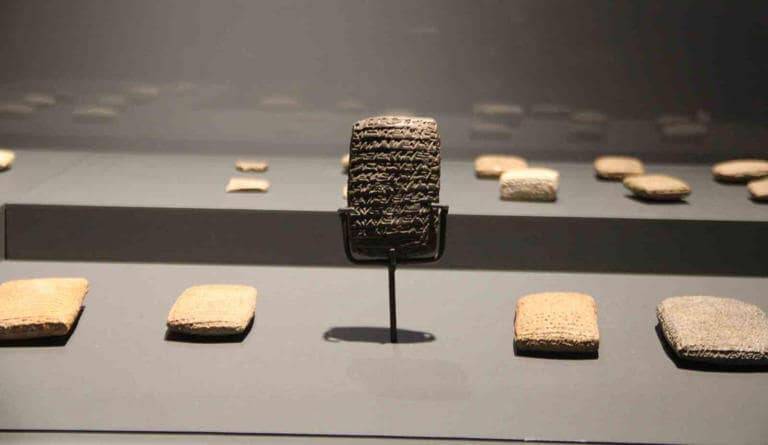Ancient tablets discovered in Kültepe Kanis-Karum, an archaeological site in Kayseri, Türkiye, revealed fascinating information about life in Anatolia 4,000 years ago.

IHA PhotoThe Kültepe Kanis-Karum archaeological site in Kayseri, Turkey.
Recently, archaeologists excavating the Kültepe Kanis-Karum ruins in Kayseri, Turkey unearthed multiple 4,000-year-old tablets containing information about the city’s vibrant social and commercial activity.
Notably, some of these tablets included references to a previously unknown type of cheese. This cheese was likely once an essential part of daily life for Anatolians. Now, archaeologists say this find offers new insight into the region’s ancient agricultural and animal husbandry practices.
Archaeologists Discover Ancient Tablets In Kültepe
For 75 years, archeologists have been excavating Turkey’s Kültepe Kanis-Karum ruins, now known as “the place where Anatolian history began.” Over the decades, researchers have uncovered over 20,000 cuneiform tablets detailing information about commercial and social life in the area, leading archaeologists to believe that Kültepe was once a vibrant hub for trade.
In a recent excavation led by Professor Fikri Kulakoğlu of Ankara University, a team of archaeologists uncovered multiple 4,000-year-old tablets that mentioned a special type of cheese called “Kültepe Peyniri.” This cheese was apparently a staple for travelers, suggesting it was durable enough to survive long journeys.
“It is understood from the tablets that there was a cheese called ‘Kültepe Cheese’ in the region 4,000 years ago,” Kulakoğlu said, according to Hurriyet Daily News. “People took this cheese with them while traveling.”
Ancient travelers likely packed the cheese alongside other preserved food items, including dried meat. This tradition of carrying preserved foods during travel has continued in the region, which is known today for its “pastırma,” a spiced dry meat.
“People at that time took boxed, sliced and dried meat with them on their journeys,” Kulakoğlu explained. “It is similar to preparing a normal sandwich in today’s conditions.”
Based on the region’s geography and resources, the cheese made 4,000 years ago likely wasn’t too different from local cheeses made today.
“Ancient Anatolia had similar conditions in that period as it does today in terms of agriculture and animal husbandry,” Kulakoğlu said. “As a matter of fact, perhaps the traditions that came before have continued until today, without interruption. There is a serious continuity.”
Excavations Reveal More Information About Life In Ancient Kültepe

IHA PhotoA 4,000-year-old clay tablet containing information about commercial and social life in Kültepe Kanis-Karum.
The Kültepe Cheese tablets aren’t the only significant find researchers made at Kültepe recently.
Kulakoğlu and his team also announced the discovery of another 4,000-year-old tablet that seems to hint at the first business known to operate in all of Anatolia.
According to this tablet, the company began with 15 kilograms of gold and comprised 12 partners, each with a different financial stake. A merchant named Amur Ishtar oversaw the company for 12 years.

IHA PhotoArchaeologists excavate part of the ancient city.
“The tablets found here are dated to the period after the 1950s [B.C.E.]. This is the period when writing first started in Anatolia,” Kulakoğlu said, according to Arkeonews. “Naturally, it is the first declaration of the first company in Anatolia, in a sense, a company deed.”
In addition to information about local comerce, the tablets found at Kültepe over the years also include details about marriages, inheritances, and other civil procedures. As such, they provide fascinating insight into the culture, economy, and everyday life of ancient Anatolians.
Kulakoğlu and his team now plan to continue excavations at Kültepe Kanis-Karum in hopes of unearthing more historically valuable artifacts.
After reading about the Kültepe Cheese, peruse these 28 photos from Sweden’s Disgusting Food Museum that will make your stomach turn. Then, explore Turkey’s ancient underground city of Derinkuyu.





